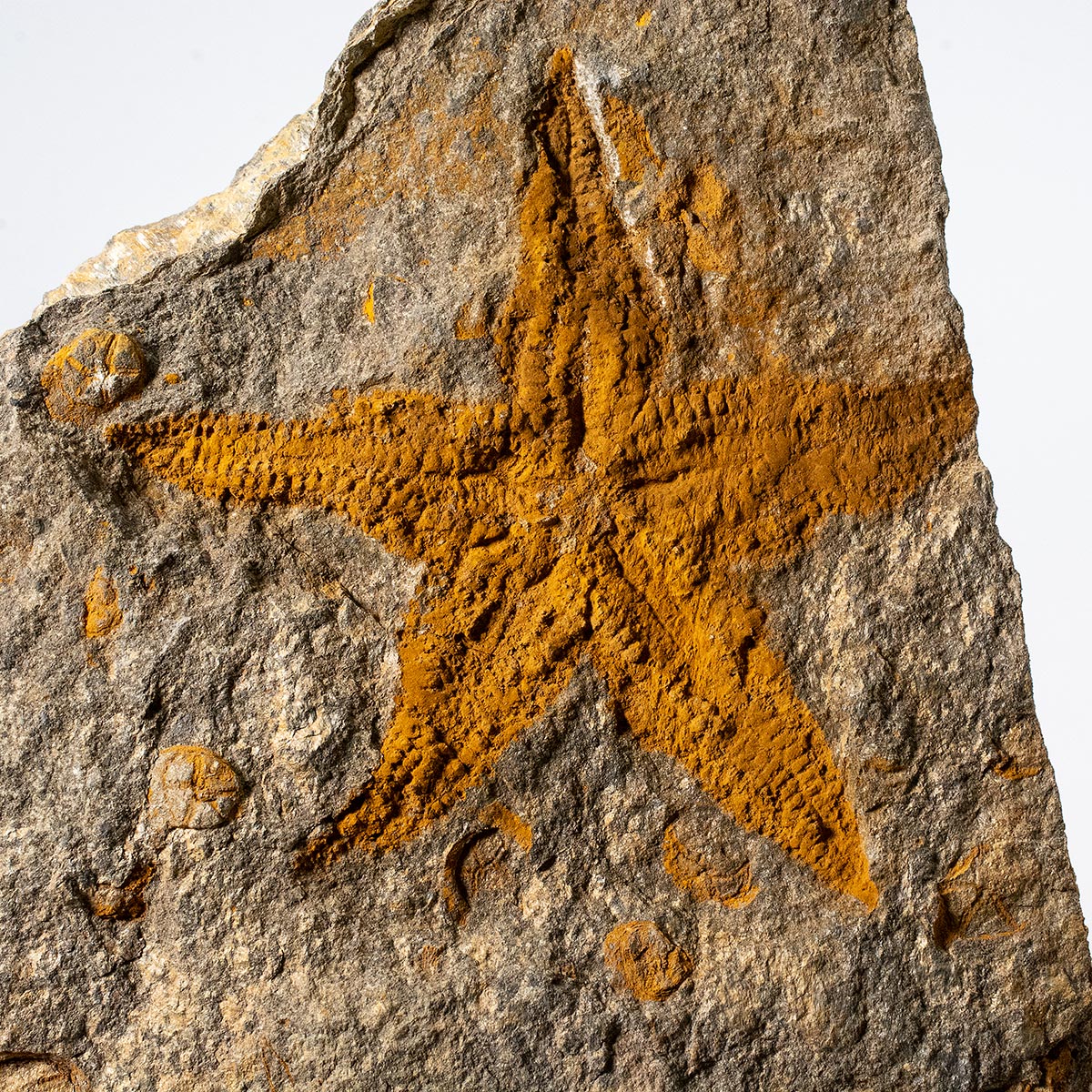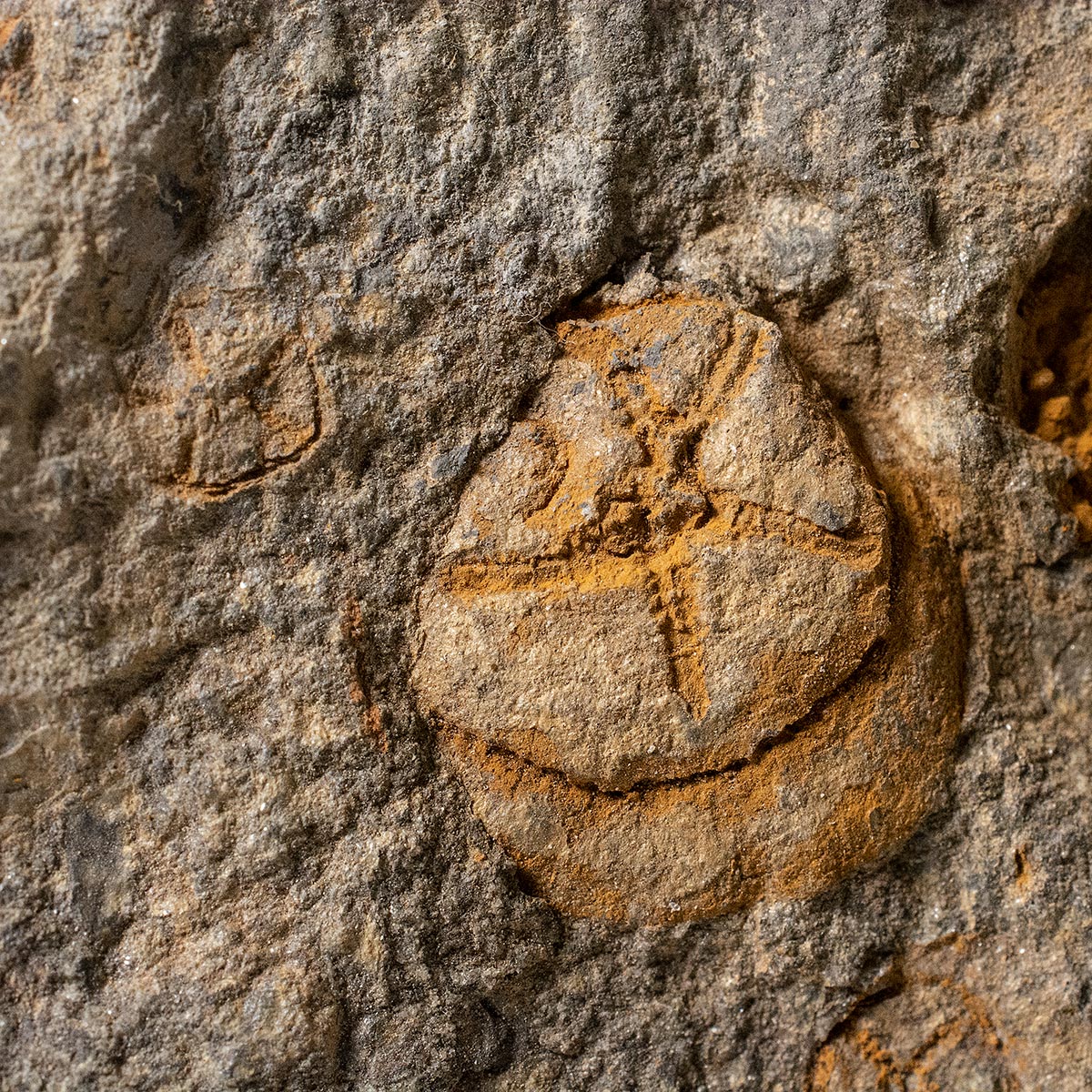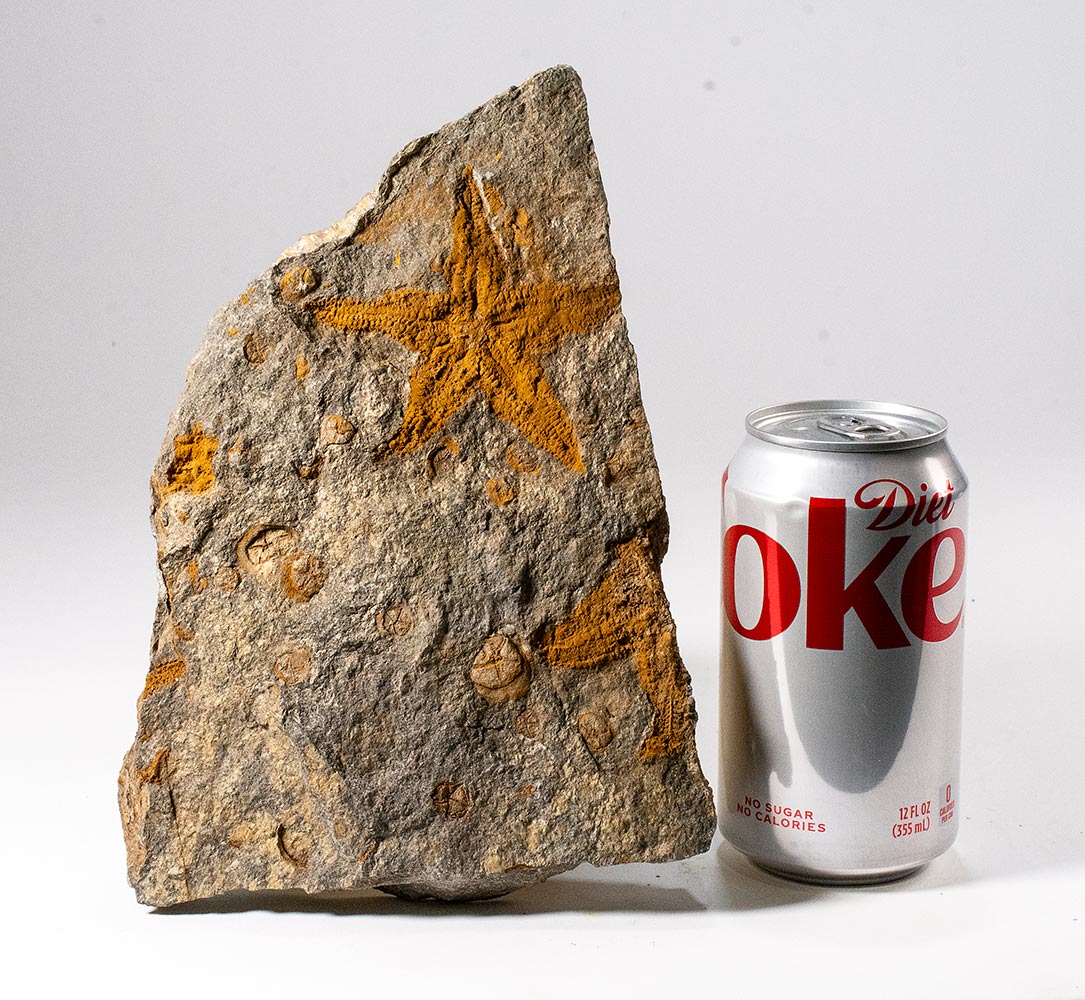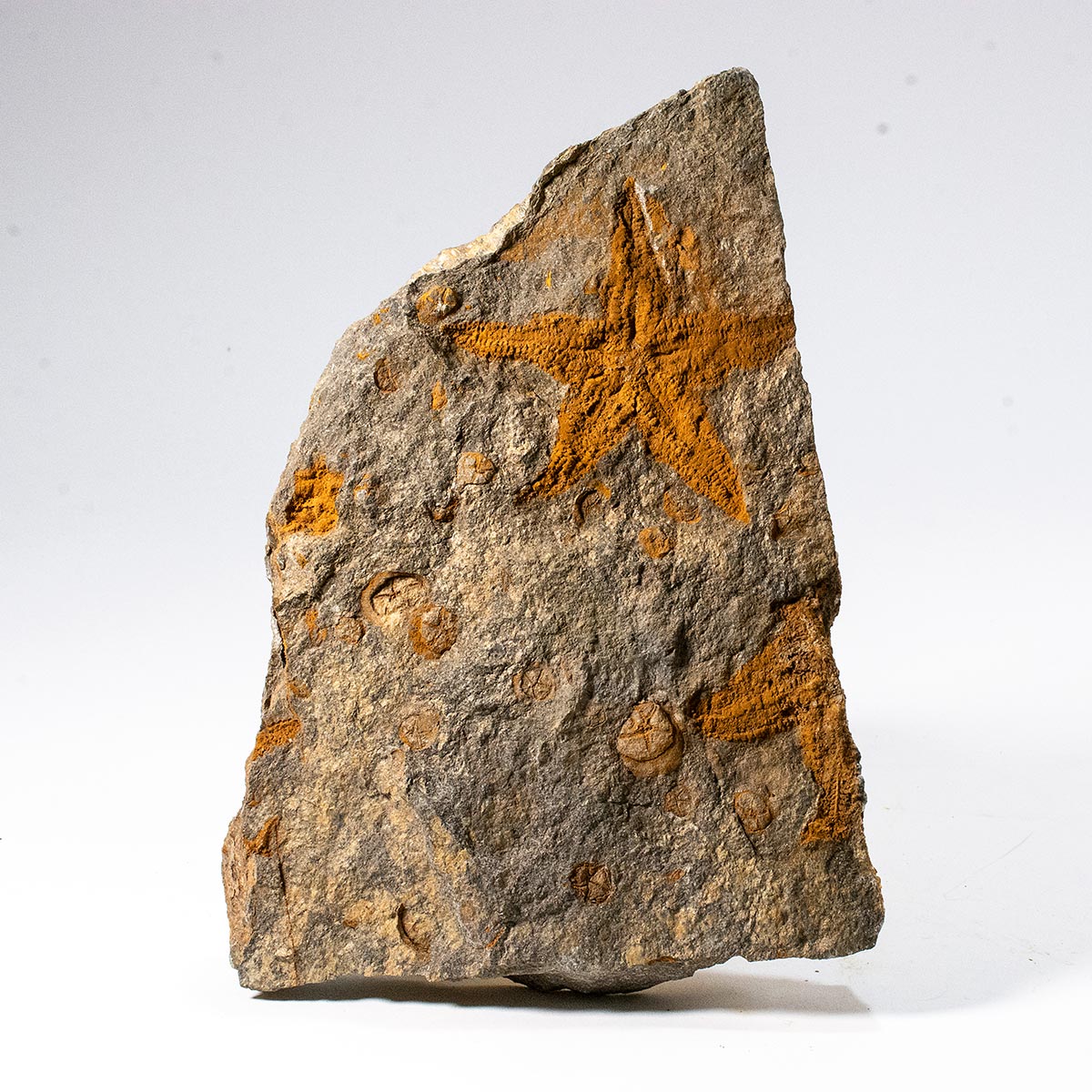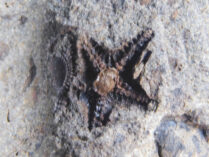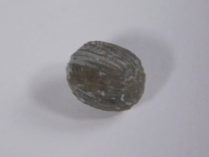Description
Petraster sp. and Spinadiscus lefebvrei
Early Ordovician (Tremadocian)
Kataoua Formation
Mecissi, Morocco
Big 220mm plate with 76mm starfish and six 10-14mm edrioasteroids. More edrioasteroids on back.
Edrioasteroids were a group of extinct echinoderms that lived during the Paleozoic era, between the Ordovician and Devonian periods, approximately 488-358 million years ago.
Edrioasteroids had a flattened, disk-shaped body covered with numerous small plates that formed a rigid, pentagonal or hexagonal exoskeleton. They were typically sessile, meaning they were attached to the sea floor, and some species had long, branching arms that extended into the water to filter feed.
Edrioasteroids were relatively small, typically measuring less than a few centimeters in diameter, and they were an important part of the marine ecosystems of their time. Today, edrioasteroid fossils are prized by collectors and are important in paleontological research for understanding the evolution and diversity of echinoderms.

